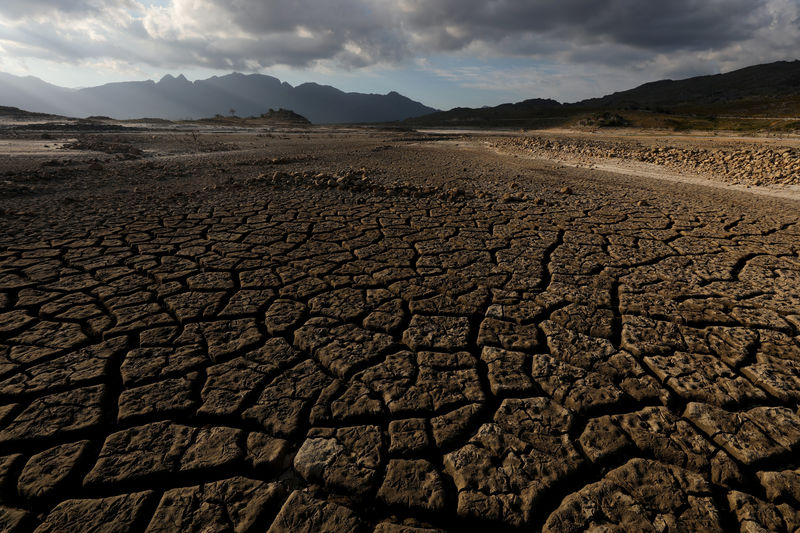 © Reuters. Sand blows across a normally submerged area at Theewaterskloof dam near Cape Town
© Reuters. Sand blows across a normally submerged area at Theewaterskloof dam near Cape TownJOHANNESBURG (Reuters) – Rating’s agency Moody’s warned on Monday the water crisis affecting Cape Town would cause the city’s borrowing to rise sharply and the provincial economy to shrink the longer the situation lasted.
A severe drought afflicting South Africa’s Western Cape province is expected to cut agricultural output by 20 percent in 2018, decimating the wheat crop and reducing apple, grape and pear exports to Europe, according to national government.
The City is bracing for “Day Zero” in late August when its taps could run dry.
Moody’s said in a report that one of the most direct impacts would be on Cape Town’s operating revenues, as 10 percent of them are from water charges.
The ratings agency estimates capital expenditure related to water and sanitation infrastructure could be as much as 12.7 billion rand ($1 billion) over the next five years.
“The long-term solutions are likely to require significant capital and operating expenditure,” Daniel Mazibuko, an analyst at Moody’s said.
The drought also threatens to slow South Africa’s economic rebound which has been fueled by a surge in agricultural production. Cape town generated nearly 10 percent of the country’s total gross domestic product in 2016.
Last Tuesday, Statistics South Africa said the economy grew 3.1 percent in October-December, the highest rate since the second quarter of 2016, after expanding by a revised 2.3 percent in the third quarter. Agriculture showed a 37.5 percent expansion after growing 41.1 percent in the previous quarter.
Government has declared drought a national disaster after its southern and western regions including Cape Town got hit hard by the drought, freeing extra funds to tackle the crisis.
Fusion Media or anyone involved with Fusion Media will not accept any liability for loss or damage as a result of reliance on the information including data, quotes, charts and buy/sell signals contained within this website. Please be fully informed regarding the risks and costs associated with trading the financial markets, it is one of the riskiest investment forms possible.
Source: Investing.com




























